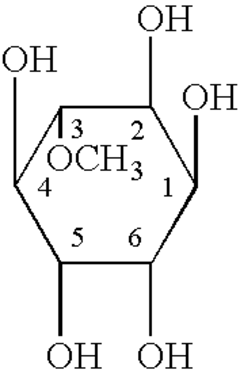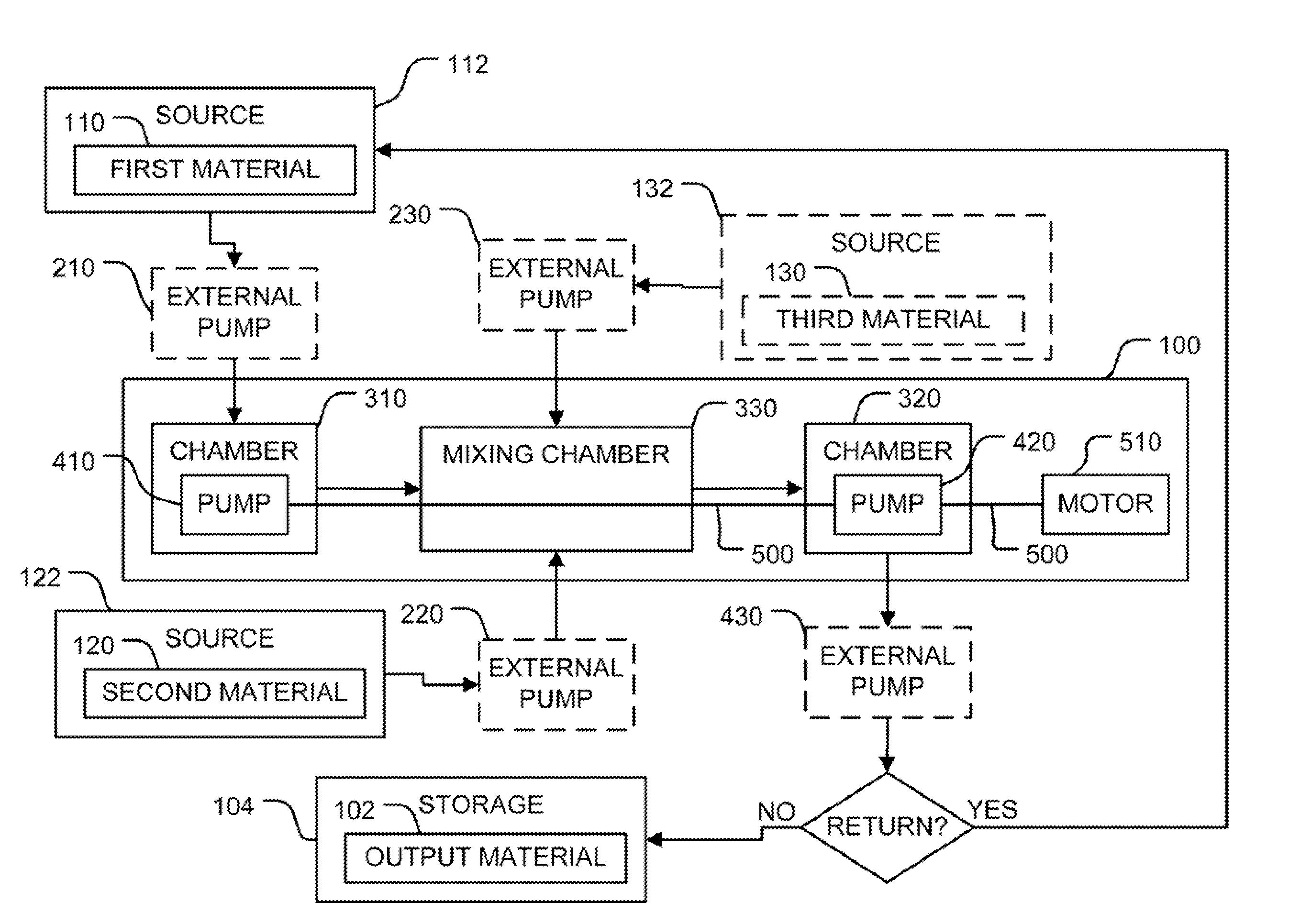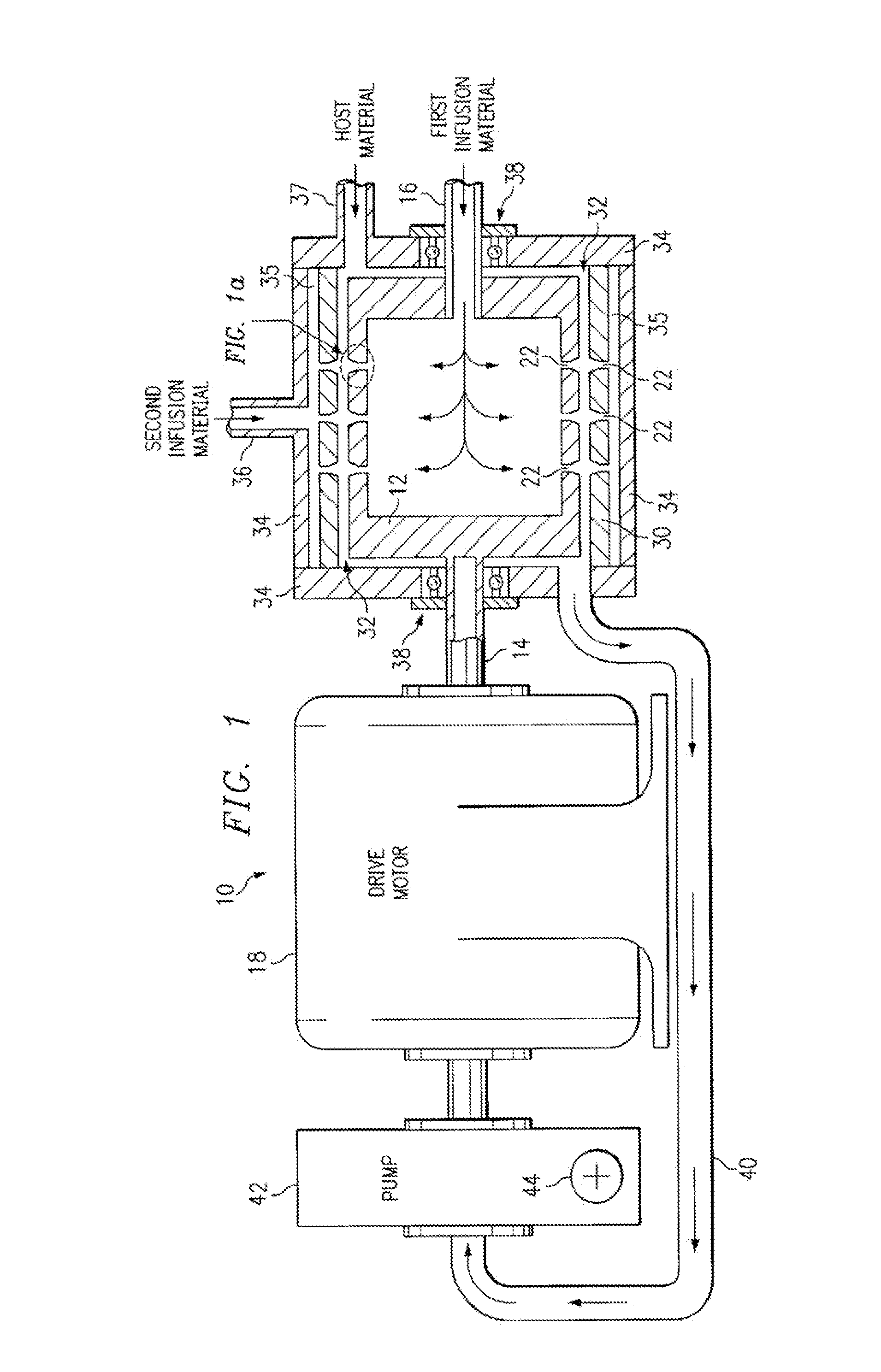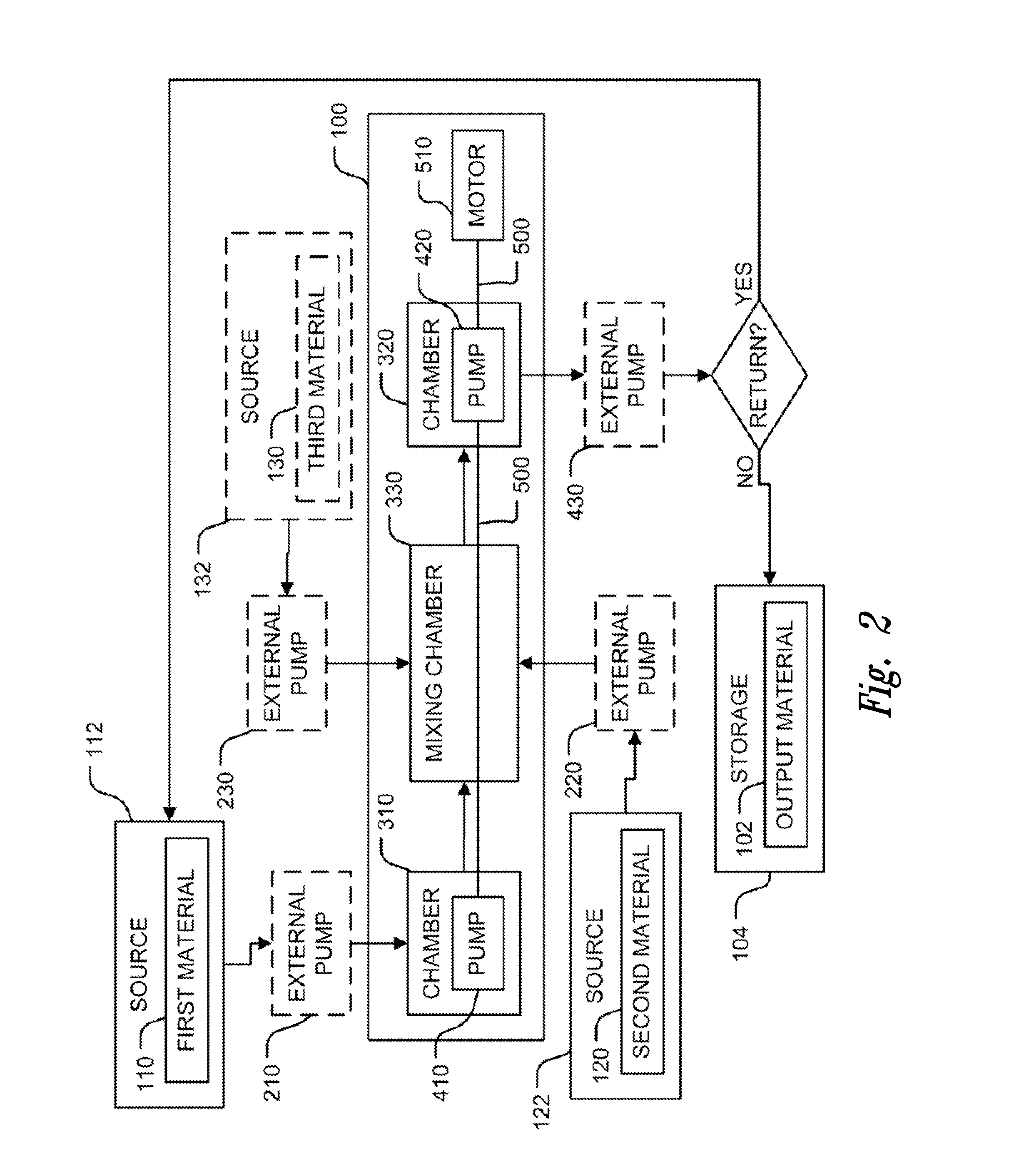How to Leverage Hypertonic Solutions for Exercise Recovery?
Hypertonic Solutions in Exercise Recovery: Background and Objectives
Hypertonic solutions have emerged as a promising avenue for enhancing exercise recovery in recent years. These solutions, characterized by their higher solute concentration compared to bodily fluids, have garnered significant attention in sports science and athletic performance research. The evolution of hypertonic solutions in exercise recovery can be traced back to the early understanding of osmosis and its effects on cellular hydration.
The primary objective of leveraging hypertonic solutions for exercise recovery is to accelerate the replenishment of lost fluids and electrolytes, thereby optimizing the body's post-exercise physiological state. This approach aims to mitigate the negative effects of dehydration and electrolyte imbalance, which are common consequences of intense physical activity. By creating an osmotic gradient, hypertonic solutions facilitate rapid fluid absorption in the gastrointestinal tract, potentially leading to faster rehydration compared to isotonic or hypotonic alternatives.
The development of hypertonic solutions for exercise recovery has been driven by the increasing demands of high-performance athletics and the growing body of research on post-exercise nutrition. As sports science has advanced, the focus has shifted from mere fluid replacement to a more holistic approach that considers the complex interplay between hydration, electrolyte balance, and nutrient delivery. This evolution has led to the formulation of sophisticated hypertonic beverages that not only address fluid loss but also incorporate carbohydrates and electrolytes to support overall recovery.
Recent technological advancements have further refined the composition and delivery mechanisms of hypertonic solutions. Innovations in ingredient sourcing, formulation techniques, and packaging have resulted in products that offer improved palatability, stability, and bioavailability. These advancements have expanded the potential applications of hypertonic solutions beyond elite athletes to include recreational exercisers and individuals engaged in physically demanding occupations.
The current landscape of hypertonic solutions in exercise recovery is characterized by a diverse range of products, from simple salt-based formulations to complex multi-ingredient blends. Research in this field continues to explore the optimal ratios of electrolytes, carbohydrates, and other nutrients to maximize the benefits of hypertonic solutions. Additionally, there is growing interest in personalized approaches that tailor the composition of these solutions to individual physiological needs and specific exercise modalities.
As we look towards the future, the goal of hypertonic solution research in exercise recovery is to develop increasingly effective and targeted formulations. This includes investigating the potential synergies between hypertonic solutions and other recovery modalities, such as compression garments or cryotherapy. Furthermore, there is a push towards understanding the long-term effects of regular hypertonic solution use on athletic performance and overall health, ensuring that these interventions not only provide acute benefits but also support sustainable athletic development.
Market Analysis of Sports Recovery Products
The sports recovery products market has experienced significant growth in recent years, driven by increasing awareness of the importance of post-exercise recovery and the rising popularity of fitness activities. This market segment encompasses a wide range of products, including hypertonic solutions, which are gaining traction as an effective means of exercise recovery.
The global sports nutrition market, which includes recovery products, was valued at approximately $44 billion in 2021 and is projected to grow at a compound annual growth rate (CAGR) of around 8% from 2022 to 2030. Within this broader market, the sports recovery segment is estimated to account for about 30% of the total market share, indicating substantial potential for hypertonic solutions and related products.
Consumer demand for sports recovery products is primarily driven by athletes, fitness enthusiasts, and health-conscious individuals seeking to optimize their performance and reduce recovery time. The increasing participation in endurance sports, such as marathons and triathlons, has further fueled the demand for effective recovery solutions.
Hypertonic solutions, in particular, are gaining popularity due to their ability to rapidly replenish electrolytes and promote hydration. These products typically contain higher concentrations of solutes than found in blood plasma, which can help accelerate fluid absorption and aid in muscle recovery. The market for hypertonic solutions is expected to grow at a faster rate than the overall sports recovery market, with some estimates suggesting a CAGR of 10-12% over the next five years.
Key players in the sports recovery market include established brands such as Gatorade, Powerade, and Nuun, as well as emerging companies specializing in hypertonic solutions. These companies are investing heavily in research and development to create innovative formulations that maximize the benefits of hypertonic solutions for exercise recovery.
Regional analysis shows that North America currently dominates the sports recovery products market, followed by Europe and Asia-Pacific. However, emerging markets in Latin America and the Middle East are expected to witness rapid growth in the coming years, presenting new opportunities for expansion.
The market is also seeing a shift towards more natural and organic ingredients, as consumers become increasingly health-conscious and environmentally aware. This trend is likely to impact the development of hypertonic solutions, with manufacturers exploring plant-based electrolytes and sustainable packaging options.
In conclusion, the market analysis of sports recovery products, particularly hypertonic solutions, reveals a growing and dynamic segment within the sports nutrition industry. With increasing consumer awareness and ongoing product innovations, the potential for leveraging hypertonic solutions in exercise recovery remains substantial, offering significant opportunities for both established players and new entrants in the market.
Current Challenges in Exercise Recovery Methods
Exercise recovery methods have evolved significantly over the years, yet several challenges persist in optimizing post-workout recuperation. One of the primary issues is the lack of standardized protocols for different types of exercise and individual physiological responses. This variability makes it difficult to prescribe universally effective recovery strategies.
The management of exercise-induced inflammation remains a complex challenge. While some inflammation is necessary for adaptation and muscle growth, excessive inflammation can lead to prolonged soreness and reduced performance. Balancing the inflammatory response to maximize recovery without hindering adaptation is a delicate process that current methods struggle to achieve consistently.
Dehydration and electrolyte imbalance continue to pose significant challenges in exercise recovery. Despite advancements in hydration strategies, many athletes still struggle with optimal fluid and electrolyte replenishment post-exercise. This can lead to decreased performance, increased risk of injury, and prolonged recovery times.
Muscle damage and soreness, particularly delayed onset muscle soreness (DOMS), remain persistent issues in exercise recovery. Current methods for mitigating DOMS, such as massage, compression garments, and cold therapy, show varying degrees of effectiveness across individuals and exercise types.
The time-consuming nature of many recovery methods presents another challenge. Athletes often face constraints in dedicating sufficient time to recovery practices, especially in high-frequency training regimens or during competitive seasons. This time pressure can lead to inadequate recovery and increased risk of overtraining.
Nutritional strategies for recovery, while advanced, still face challenges in personalization and timing. The optimal composition and timing of post-exercise nutrition can vary greatly depending on the individual, exercise type, and environmental conditions. Current methods often struggle to provide sufficiently tailored nutritional recommendations.
Sleep quality and quantity, crucial for recovery, are frequently compromised in athletes due to various factors including travel, competition stress, and irregular schedules. Existing recovery methods often fail to adequately address or integrate sleep optimization strategies.
The psychological aspects of recovery, including stress management and mental fatigue, are often underaddressed in current recovery protocols. The interplay between physical and mental recovery presents a complex challenge that many existing methods do not fully encompass.
Lastly, the integration of recovery methods with training programs remains a challenge. Balancing the intensity and frequency of training with adequate recovery time is crucial for performance improvement and injury prevention. However, current approaches often struggle to provide dynamic, adaptive recovery plans that seamlessly integrate with evolving training regimens.
Existing Hypertonic Solution Formulations and Applications
01 Hypertonic solutions for cell recovery and preservation
Hypertonic solutions are used for cell recovery and preservation in various biological applications. These solutions help maintain cell viability during storage and transport by controlling osmotic pressure and preventing cell damage. The composition of these solutions typically includes salts, sugars, and other osmolytes to create a hypertonic environment that protects cells from stress and dehydration.- Hypertonic solutions for cell recovery and preservation: Hypertonic solutions are used in cell recovery and preservation processes. These solutions help maintain cell viability during cryopreservation, storage, and recovery. The high solute concentration in hypertonic solutions can protect cells from damage caused by ice formation and osmotic stress.
- Hypertonic solutions in medical treatments: Hypertonic solutions are employed in various medical treatments, including fluid resuscitation, reducing intracranial pressure, and treating edema. These solutions can help restore fluid balance, improve circulation, and reduce swelling in tissues.
- Recovery of biomolecules using hypertonic solutions: Hypertonic solutions are utilized in the recovery and purification of biomolecules such as proteins, nucleic acids, and other cellular components. The high salt concentration in these solutions can aid in the extraction and separation of target molecules from complex biological samples.
- Hypertonic solutions in water treatment and desalination: Hypertonic solutions play a role in water treatment and desalination processes. These solutions can be used in forward osmosis systems to draw water across semipermeable membranes, allowing for the purification and recovery of water from various sources.
- Recovery of microorganisms using hypertonic solutions: Hypertonic solutions are employed in the recovery and cultivation of microorganisms. These solutions can help in the isolation and concentration of microbes from environmental samples, as well as in the recovery of stressed or dormant microbial cells.
02 Hypertonic solutions in medical treatments
Hypertonic solutions are employed in various medical treatments, particularly for conditions involving fluid imbalances. These solutions can be used for intravenous therapy to treat dehydration, shock, and certain types of edema. The high osmolarity of hypertonic solutions helps draw fluid from tissues into the bloodstream, improving circulation and organ function during recovery.Expand Specific Solutions03 Recovery of biomolecules using hypertonic solutions
Hypertonic solutions play a crucial role in the recovery and purification of biomolecules, such as proteins and nucleic acids. These solutions create osmotic gradients that facilitate the extraction of target molecules from cells or tissues. The process often involves careful adjustment of salt concentrations and pH to optimize recovery efficiency while maintaining the integrity of the desired biomolecules.Expand Specific Solutions04 Hypertonic solutions in sports and exercise recovery
Hypertonic solutions are used in sports and exercise recovery to replenish electrolytes and promote rapid rehydration. These solutions typically contain higher concentrations of electrolytes and carbohydrates compared to isotonic drinks. The hypertonic nature of these beverages helps accelerate fluid absorption in the gut, supporting faster recovery and performance restoration after intense physical activity.Expand Specific Solutions05 Industrial applications of hypertonic solutions for recovery processes
Hypertonic solutions find applications in various industrial recovery processes, including wastewater treatment, mineral extraction, and food processing. These solutions can be used to separate and concentrate valuable components from complex mixtures through osmotic pressure differences. The precise composition of hypertonic solutions is tailored to the specific recovery requirements of each industrial application.Expand Specific Solutions
Key Players in Sports Nutrition and Recovery Industry
The market for hypertonic solutions in exercise recovery is in a growth phase, with increasing interest from both athletes and researchers. The global sports nutrition market, which includes recovery solutions, is projected to reach significant size in the coming years. Technologically, the field is advancing rapidly, with companies like Revalesio Corp. and Ajinomoto Co., Inc. leading innovation. Research institutions such as Penn State Research Foundation and The University of New Mexico are contributing to the scientific understanding of hypertonic solutions' efficacy. While the technology is not fully mature, it shows promise, with companies like Humanetics Corp. and Inventage Lab, Inc. developing novel applications. The competitive landscape is diverse, including both established players and emerging startups, indicating a dynamic and evolving market.
Revalesio Corp.
Ajinomoto Co., Inc.
Scientific Basis of Hypertonic Solutions for Muscle Recovery
- A combination of creatine or its active derivatives with pinitol or its derivatives, optionally accompanied by carbohydrates, administered simultaneously to elevate pinitol blood plasma levels, is used to enhance creatine uptake and retention in muscle tissue, thereby improving muscle performance and hypertrophy.
- Administration of electrokinetically altered aqueous fluids containing charge-stabilized oxygen-containing nanostructures, which are superoxygenated and administered in amounts sufficient to reduce plasma inflammatory cytokines, prevent muscle and tendon damage, and enhance recovery by improving oxygen utilization and reducing perceived exertion.
Safety and Efficacy Considerations
When considering the use of hypertonic solutions for exercise recovery, safety and efficacy are paramount concerns that require careful examination. The safety profile of hypertonic solutions largely depends on their composition, concentration, and method of administration. Oral consumption of hypertonic drinks is generally considered safe when used as directed, but excessive intake may lead to gastrointestinal discomfort or electrolyte imbalances. Intravenous administration of hypertonic solutions, while potentially more effective, carries additional risks and should only be performed under medical supervision.
Efficacy considerations for hypertonic solutions in exercise recovery are multifaceted. Research has shown that these solutions can effectively replenish lost fluids and electrolytes, potentially accelerating the recovery process. The osmotic effect of hypertonic solutions may enhance fluid absorption in the intestines, leading to faster rehydration compared to isotonic or hypotonic alternatives. Additionally, some studies suggest that hypertonic solutions can improve muscle glycogen resynthesis, which is crucial for athletes engaging in repeated bouts of intense exercise.
However, the effectiveness of hypertonic solutions can vary depending on factors such as the type and duration of exercise, individual physiology, and environmental conditions. For endurance athletes, the benefits of rapid fluid and electrolyte replacement may be more pronounced, while strength athletes might focus more on the potential for enhanced glycogen replenishment. It is essential to consider the timing of hypertonic solution consumption, as ingestion immediately post-exercise may yield the most significant benefits.
The concentration of the hypertonic solution is a critical factor in both safety and efficacy. Solutions that are too concentrated may delay gastric emptying and potentially cause gastrointestinal distress. Conversely, solutions that are not sufficiently hypertonic may not provide the desired osmotic effects. Finding the optimal balance is crucial for maximizing benefits while minimizing risks.
Long-term effects of regular hypertonic solution use for exercise recovery should also be considered. While short-term benefits are well-documented, the impact of prolonged use on kidney function, electrolyte balance, and overall health requires further investigation. Athletes and fitness enthusiasts should be advised to use hypertonic solutions judiciously and in conjunction with a balanced diet and proper hydration practices.
In conclusion, while hypertonic solutions show promise for enhancing exercise recovery, their use should be approached with caution. Individualized approaches, considering an athlete's specific needs and physiological responses, are recommended. Future research should focus on optimizing solution compositions and protocols to maximize efficacy while ensuring long-term safety.
Integration with Personalized Recovery Strategies
The integration of hypertonic solutions into personalized recovery strategies represents a significant advancement in exercise science and sports medicine. This approach recognizes that each athlete's physiological response to exercise and recovery needs are unique, necessitating tailored interventions for optimal results. By combining the benefits of hypertonic solutions with individualized recovery plans, athletes can potentially enhance their post-exercise recuperation and overall performance.
Personalization in recovery strategies typically involves considering factors such as an athlete's age, gender, body composition, fitness level, training intensity, and specific sport demands. When incorporating hypertonic solutions into these personalized plans, it's crucial to assess the individual's hydration status, electrolyte balance, and nutrient needs. This assessment allows for the precise formulation of hypertonic solutions that complement the athlete's physiological state and recovery requirements.
The timing of hypertonic solution consumption within a personalized recovery strategy is another critical factor. Some athletes may benefit from consuming hypertonic solutions immediately post-exercise, while others might require a more gradual rehydration approach. This timing can be optimized based on the individual's sweat rate, exercise duration, and intensity, as well as their upcoming training or competition schedule.
Moreover, the integration of hypertonic solutions should be considered alongside other recovery modalities such as active recovery, compression garments, massage, and sleep optimization. By synergizing these various recovery techniques, athletes can potentially amplify the benefits of each method, leading to more effective overall recovery. For instance, the use of hypertonic solutions could be timed with specific phases of sleep to maximize the body's natural recovery processes.
Technological advancements in wearable devices and biomarker analysis can further enhance the personalization of recovery strategies incorporating hypertonic solutions. Real-time monitoring of physiological parameters such as heart rate variability, sleep quality, and hydration status can inform the precise composition and timing of hypertonic solution intake. This data-driven approach allows for continuous refinement of the recovery protocol, ensuring that it remains optimally tailored to the athlete's evolving needs.
In conclusion, the integration of hypertonic solutions with personalized recovery strategies offers a promising avenue for enhancing athletic performance and recovery. By carefully considering individual physiological needs, timing of consumption, and synergies with other recovery modalities, athletes and their support teams can develop highly effective, tailored recovery plans that maximize the benefits of hypertonic solutions.





